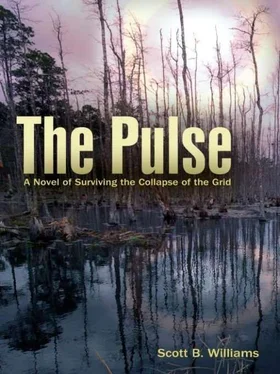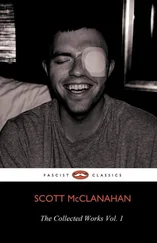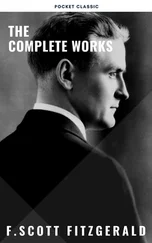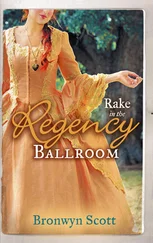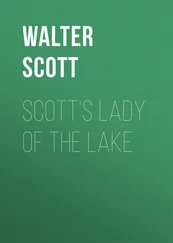Other than an occasional visit to the cockpit to get some fresh air and look around, Larry stayed below in the port cabin most of the time, reading or sleeping in his bunk. He was still in a lot of pain, and Artie insisted that he take it easy and not try to do too much. By now, Artie had adapted to a four hours on, four hours off routine of alternating watches with Scully. But there wasn’t a whole lot to do while on watch. The wind vane took care of the steering, and the steady trade winds allowed them to sail a downwind run with the sails set wing on wing—the jib poled out to starboard, and the main eased out as far as possible against the port shrouds.
Cuba, by far the longest of all the islands in the West Indies, seemed to go on forever. The main island was out of sight by night at their distance, but the following day Artie caught occasional hazy glimpses of the higher mountains inland.
By carefully recording their dead-reckoning position each hour in the logbook and marking off a rhumb line on the chart, Artie and Scully were able to keep track of their progress along the island coast. They were able to check their calculations against charted landmarks, especially along the long outlying island of Cayo Lobos, which they passed much closer to than the main island. One more night at the consistent speeds they were sailing put them at the Cay Sal Bank around dawn, just as Larry had estimated the day before. As they neared this area of reef-studded shallow water, Scully reduced sail at around 0400 hours to slow the boat down to six knots, a speed that felt to Artie like sitting still on the catamaran, but still a respectable average on many sailboats . Scully told Artie that this would ensure they would not arrive at the banks too early.
“Got to wait for de sun come up to enter dat bank, mon. Only one way to navigate de banks—dat’s by de eyeball. Even when it’s workin’, de GPS no good in a place like dat.”
“I thought it wasn’t that big of a deal on a catamaran. Isn’t our draft so shallow we can hardly hit anything anyway?”
“Shallow draft, but on dem bank de reef sometime all de way to de top. Even a skiff got to find de channel. Coral like dat tear out de bottom on a plywood boat. Dem banks no place to get in trouble like dat. No watah on dem cays and even before now not many people going dat place.”
“So the diving is really good here, huh?”
“Bahamas best diving in de world, mon, and Cay Sal best in de Bahamas. Fish in dat place not afraid because most of dem nevah see a mon before.”
When the sun did come up, Cuba was no longer in sight to the south and the only visible land was a sliver of a low-lying cay of rock and sand roughly three miles ahead. The transition from the ocean to the edge of the bank was marked by a dramatic change in water color, from deep indigo blue to transparent aquamarine green through which Artie could see every detail of the sand bottom 20 feet below. The water over the bank was impossibly clear, the underwater visibility far exceeding even that around the coral reefs of Isleta Palominito. When they passed over an isolated patch of coral formations that reached to within 10 feet of the surface, Artie could clearly see that it was teeming with a dazzling array of tropical fish. A large black-tip shark darted away at right angles to their course as the catamaran’s twin bows passing overhead startled it. Larry was clearly excited to be here, and had come on deck to eagerly scan the line of cays ahead with his binoculars.
“Where are we going to anchor, near the island?” Artie asked.
“No, just past it, off the north end, on the edge of the banks. There’s an extensive patch of reef there you won’t believe, huge elkhorn and brain coral formations, lots of deep crevices and canyons, all in about 30 feet of water. It’s thick with big grouper and yellowtails. We can clean up there in short order. Damn, I just wish I could dive!”
“Sorry, little brother, but you’re going to have to sit this one out—doctor’s orders. I’d like to try it myself, but I don’t know after seeing the size of that shark back there.”
“Plenty shark,” Scully said, as he steered them closer to the cays, “but not to worry too much. Best t’ing is to spear de fish and get dem on de boat quick.”
“Yeah, that’s a good idea, diving in shark-infested waters and then calling the sharks to dinner by poking bloody holes in a bunch of fish!”
“They don’t usually mess with you if you don’t hang around too long,” Larry said. “Like Scully said, as soon as you spear a fish, get it out of the water as fast as possible to minimize the blood.”
Artie was still skeptical a half hour later, when, anchored over the reef, he put on a mask and snorkel and sat on the edge of the deck with a pair of fins. Scully was already in the water, and Artie could see him free-diving effortlessly into the winding and convoluted canyons between the coral, his dreadlocks streaming behind him as he cruised 20 feet below, with his speargun at ready.
By the time Artie was in the water, still swimming by the boat and looking around beneath the surface with his mask, Scully was on the way back to the boat with a two-and-a-half-foot long, heavy-bodied fish impaled on his spear. Artie found out later it was a Nassau grouper, a reef fish much sought after in the Bahamas that is much more scarce near the populated islands. The Anguilla Cays were so far from the rest of the Bahamian islands they may as well have been in another country, and from what Artie could see as he snorkeled along the surface, Larry had not been exaggerating about the possibilities for stocking the boat with fresh fish. The only problem was that, for Artie, handling the awkward Hawaiian sling spear gun underwater was difficult enough, on top of the fact that to get within range of the fish, it was necessary to hold your breath and swim down to at least 15 feet or deeper to reach the coral. Artie had little experience using the snorkeling gear, and even less free-diving to any depth. By the time he got close enough to start looking for potential prey, he invariably felt the need to return to the surface for air. When he did get a shot at a grouper, the stainless-steel spear missed by a wide margin and went into a patch of sand on the bottom, a good 25 feet deep. He tried twice to reach it, each time having to abandon the attempt and lunge for the surface for another breath before he could reach the bottom. Finally, Scully came to his rescue and got the spear. By this time, Scully already had more than a half-dozen fish on the decks of the Casey Nicole, and when Artie saw a 10-foot shark swimming around just on the edge of his visibility limit, he made for the boarding ladder as fast as he could.
“Sorry, little brother, but I guess we would starve to death if we were dependent upon my abilities as a hunter.”
“That’s all right, Doc. It takes practice. You’ll get your chance again.”
Artie marveled at the array of fish Scully had lain out on the teak slats of the forward deck. When he finally came aboard and took off his gear, he had one last prize—a huge spiny lobster, which he held up for Larry with a grin.
“You’re the man, Scully!” Larry was ecstatic about the lobster. “Scully won’t eat lobster,” he explained to Artie. “But he got one for us, since I couldn’t do it myself.”
“Dat’s not I-tal, mon,” he said when Artie asked if he did not like lobster. “A Rasta don’t to eat dem lobstah, crab and animal like dat—only fish. But if I an’ I got not’ing to eat, not to worry ’bout dat, gonna eat dem too.”
“Well, too bad for you, Scully, but the Doc and I are going to have lobster tail for breakfast, so we need to get going.” He said to Artie, “I told you this place would be worth a short stop, didn’t I?”
Читать дальше
